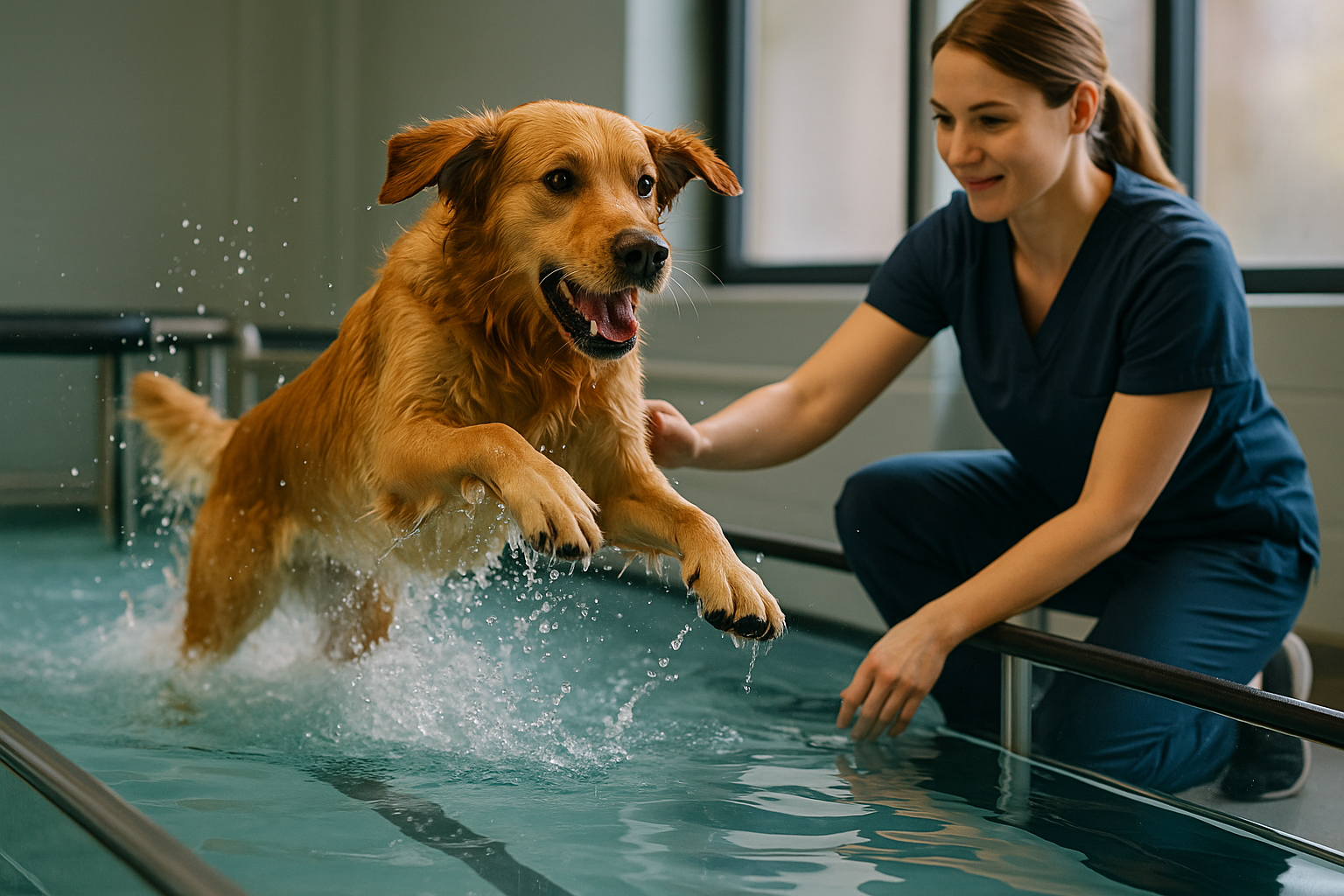Aquatic Therapy for Arthritic Pets: A Splash of Relief
In the realm of veterinary care, a groundbreaking approach is making waves: aquatic therapy for arthritic pets. This innovative treatment method is transforming the lives of our furry companions, offering a beacon of hope for those struggling with joint pain and mobility issues. As pet owners seek alternatives to traditional treatments, aquatic therapy emerges as a promising solution, combining the healing properties of water with tailored exercise routines to provide relief and improve quality of life for arthritic animals.

Understanding the Aquatic Advantage
Water’s unique properties make it an ideal medium for therapeutic exercises. The buoyancy of water reduces the impact on joints, allowing pets to move more freely with less pain. Hydrostatic pressure provides gentle resistance, promoting muscle strengthening and improved circulation. The warmth of the water also helps to relax muscles and increase flexibility. These combined effects create an environment where arthritic pets can exercise more comfortably and effectively than on land.
Tailored Treatments: From Poodles to Parrots
While dogs are the most common recipients of aquatic therapy, the treatment is not limited to canines. Cats, rabbits, and even some exotic pets like parrots have benefited from customized water-based exercises. Treatment plans are meticulously designed to address each animal’s specific needs, taking into account factors such as size, breed, and the severity of their condition. Sessions may include underwater treadmill exercises, swimming, or guided movements to target particular muscle groups and joints.
The Science Behind the Splash
Recent studies have shed light on the efficacy of aquatic therapy for arthritic pets. A 2020 study published in the Journal of Veterinary Science found that dogs with hip dysplasia showed significant improvement in gait and pain reduction after a 12-week hydrotherapy program. Another research project conducted at a leading veterinary college demonstrated that cats with osteoarthritis experienced increased mobility and decreased pain scores following regular aquatic therapy sessions.
Beyond Arthritis: Expanding Horizons
While arthritis remains the primary focus, veterinarians are exploring the potential of aquatic therapy for a broader range of conditions. Post-operative rehabilitation, weight management, and neurological disorders are among the areas where water-based treatments are showing promise. This versatility is driving the growth of specialized pet hydrotherapy centers across the globe, with an estimated market value of $150 million in 2021 and projections for steady growth in the coming years.
Implementing Aquatic Therapy: A Team Effort
Successful aquatic therapy requires collaboration between veterinarians, certified animal rehabilitation specialists, and pet owners. The process begins with a thorough assessment of the pet’s condition, followed by the development of a personalized treatment plan. Pet owners play a crucial role in the therapy’s success, often participating in sessions and continuing prescribed exercises at home. This holistic approach ensures that the benefits of aquatic therapy extend beyond the pool, improving the overall well-being of arthritic pets.
Challenges and Considerations
Despite its many benefits, aquatic therapy is not without challenges. Some pets may initially fear water, requiring patience and gradual introduction to the therapy. Additionally, the cost of specialized equipment and facilities can be significant, with some advanced underwater treadmills priced at upwards of $30,000. This can limit accessibility for some pet owners, though many veterinary practices are working to make the treatment more widely available through shared facilities and flexible payment options.
The Future of Furry Fitness
As technology advances, so too does the field of pet aquatic therapy. Innovations such as underwater cameras for gait analysis and wearable sensors to track progress are enhancing the precision and effectiveness of treatments. Research is also ongoing into the potential of combining aquatic therapy with other modalities, such as acupuncture or laser therapy, to create comprehensive treatment protocols for arthritic pets.
A Ripple Effect on Pet Care
The growing popularity of aquatic therapy for arthritic pets is having a broader impact on the veterinary industry. It’s fostering a shift towards more holistic, preventative approaches to pet health care. As pet owners witness the transformative effects of water-based treatments, there’s an increased demand for alternative and complementary therapies across all aspects of animal wellness.
Diving into a Brighter Future
Aquatic therapy represents a sea change in the treatment of arthritis and other mobility issues in pets. By harnessing the healing power of water, veterinarians and pet owners are opening up new possibilities for improved quality of life in our animal companions. As research continues and techniques evolve, aquatic therapy stands poised to become an integral part of veterinary care, offering hope and relief to countless arthritic pets. For those seeking alternatives to traditional treatments, this innovative approach provides a refreshing splash of optimism in the ongoing quest to keep our furry friends happy, healthy, and active throughout their lives.




